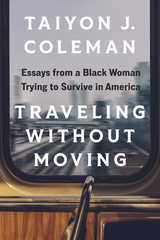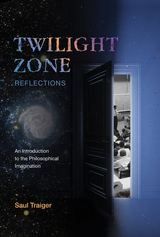4 books about Oak Ridge
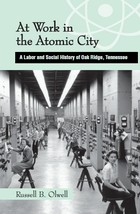
At Work in the Atomic City
A Labor and Social History of Oak Ridge, Tennessee
Russell B. Olwell
University of Tennessee Press, 2008
Founded during World War II, Oak Ridge, Tennessee, was a vital link in the U.S. military’s atomic bomb assembly line—the site where scientists worked at a breakneck pace to turn tons of uranium into a few grams of the artificial element plutonium. To construct and operate the plants needed for this effort, thousands of workers, both skilled and unskilled, converged on the “city behind a fence” tucked between two ridges of sparsely populated farmland in the Tennessee hills.
At Work in the Atomic City explores the world of those workers and their efforts to form unions, create a community, and gain political rights over their city. It follows them from their arrival at Oak Ridge, to the places where they lived, and to their experiences in a dangerous and secretive workplace. Lured by promises of housing, plentiful work, and schooling for their children, they were often exposed to dangerous levels of radioactivity, harmful chemicals, and other hazards. Although scientists and doctors intended to protect workers, the pressure to produce materials for the bomb often overrode safety considerations. After the war, as the military sought to reduce services and jobs in Oak Ridge, workers organized unions at two plants to demand higher wages and job security. However, the new Taft-Hartley Act limited defense workers’ ability to strike and thus curbed union influence.
The book examines the ongoing debates over workers’ rights at Oak Ridge—notably the controversy surrounding the new federal program intended to compensate workers and their families for injuries sustained on the job. Because of faulty record keeping at the facilities and confusion over exposure levels, many have been denied payment to this day.
Drawing on extensive research into oral history collections, transcripts of government proceedings, and other primary sources, At Work in the Atomic City is the first detailed account of the workers who built and labored in the facilities that helped ensure the success of the Manhattan Project—a story known, heretofore, only in broad outline.
Russell Olwell, an assistant professor of history at Eastern Michigan University, has published articles in ISIS, Tennessee Historical Quarterly, and Technology and Culture.
At Work in the Atomic City explores the world of those workers and their efforts to form unions, create a community, and gain political rights over their city. It follows them from their arrival at Oak Ridge, to the places where they lived, and to their experiences in a dangerous and secretive workplace. Lured by promises of housing, plentiful work, and schooling for their children, they were often exposed to dangerous levels of radioactivity, harmful chemicals, and other hazards. Although scientists and doctors intended to protect workers, the pressure to produce materials for the bomb often overrode safety considerations. After the war, as the military sought to reduce services and jobs in Oak Ridge, workers organized unions at two plants to demand higher wages and job security. However, the new Taft-Hartley Act limited defense workers’ ability to strike and thus curbed union influence.
The book examines the ongoing debates over workers’ rights at Oak Ridge—notably the controversy surrounding the new federal program intended to compensate workers and their families for injuries sustained on the job. Because of faulty record keeping at the facilities and confusion over exposure levels, many have been denied payment to this day.
Drawing on extensive research into oral history collections, transcripts of government proceedings, and other primary sources, At Work in the Atomic City is the first detailed account of the workers who built and labored in the facilities that helped ensure the success of the Manhattan Project—a story known, heretofore, only in broad outline.
Russell Olwell, an assistant professor of history at Eastern Michigan University, has published articles in ISIS, Tennessee Historical Quarterly, and Technology and Culture.
[more]
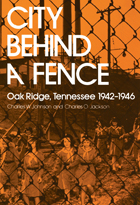
City Behind Fence
Oak Ridge, Tennessee, 1942-1946
Charles W. Johnson
University of Tennessee Press, 1981
Oak Ridge, Tennessee, was created by the U.S. government during World War II to aid in the construction of the first atomic bomb. Drawing on oral history and previously classified material, this book portrays the patterns of daily life in this unique setting.
[more]
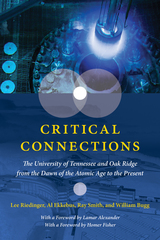
Critical Connections
The University of Tennessee and Oak Ridge from the Dawn of the Atomic Age to the Present
Lee Riedinger
University of Tennessee Press, 2024
The bombing of Pearl Harbor set off a chain of events that included the race to beat German scientists to build the atomic bomb. A tiny hamlet tucked away in the southern Appalachians proved an unlikely linchpin to win the race. The Manhattan Project required the combination of four secret sites—Clinton Laboratories, Y-12, K-25, and S-50—75,000 workers, and the nation’s finest scientists to create the Secret City, Oak Ridge. From the beginning, the effort was aided by the nearby University of Tennessee, which provided expertise to make the weapon possible. Following World War II, it was not clear what role this huge research and development program would play, but pioneering scientists and administrators were determined that one option—dismantling the whole thing—would not happen.
Critical Connections chronicles how Oak Ridge National Laboratory (ORNL), the Y-12 National Security Complex, and their partners became outstanding examples of the military-industrial-educational complex from the Cold War to the present day. At the beginning of the 1950s, Oak Ridge became a flourishing, less-secret city, and the authors show how, decade by decade, ORNL became the source of major breakthroughs in physics, biology, computing, and other fields—and how these achievements required ever-closer connections with UT. By the mid-1990s, after many successful joint initiatives between UT and ORNL, UT was poised to compete to become the manager of ORNL. In 2000, UT-Battelle LLC won the bid from the Department of Energy: UT was charged with providing scientific direction and key personnel; its partner Battelle would oversee ORNL’s operations and chart its technology direction.
The authors highlight the scientific developments these connections have brought, from nanotechnology to nuclear fission, from cryogenic experiments on mice to the world’s fastest supercomputer. The partnerships between a university, a city, and federal facilities helped solve some of the greatest challenges of the twentieth century—and point toward how to deal with those of the twenty-first.
Critical Connections chronicles how Oak Ridge National Laboratory (ORNL), the Y-12 National Security Complex, and their partners became outstanding examples of the military-industrial-educational complex from the Cold War to the present day. At the beginning of the 1950s, Oak Ridge became a flourishing, less-secret city, and the authors show how, decade by decade, ORNL became the source of major breakthroughs in physics, biology, computing, and other fields—and how these achievements required ever-closer connections with UT. By the mid-1990s, after many successful joint initiatives between UT and ORNL, UT was poised to compete to become the manager of ORNL. In 2000, UT-Battelle LLC won the bid from the Department of Energy: UT was charged with providing scientific direction and key personnel; its partner Battelle would oversee ORNL’s operations and chart its technology direction.
The authors highlight the scientific developments these connections have brought, from nanotechnology to nuclear fission, from cryogenic experiments on mice to the world’s fastest supercomputer. The partnerships between a university, a city, and federal facilities helped solve some of the greatest challenges of the twentieth century—and point toward how to deal with those of the twenty-first.
[more]
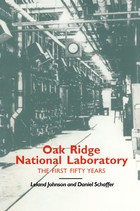
Oak Ridge National Laboratory
First Fifty Years
Leland Johnson
University of Tennessee Press, 1994
READERS
Browse our collection.
PUBLISHERS
See BiblioVault's publisher services.
STUDENT SERVICES
Files for college accessibility offices.
UChicago Accessibility Resources
home | accessibility | search | about | contact us
BiblioVault ® 2001 - 2024
The University of Chicago Press


